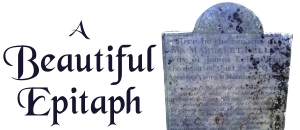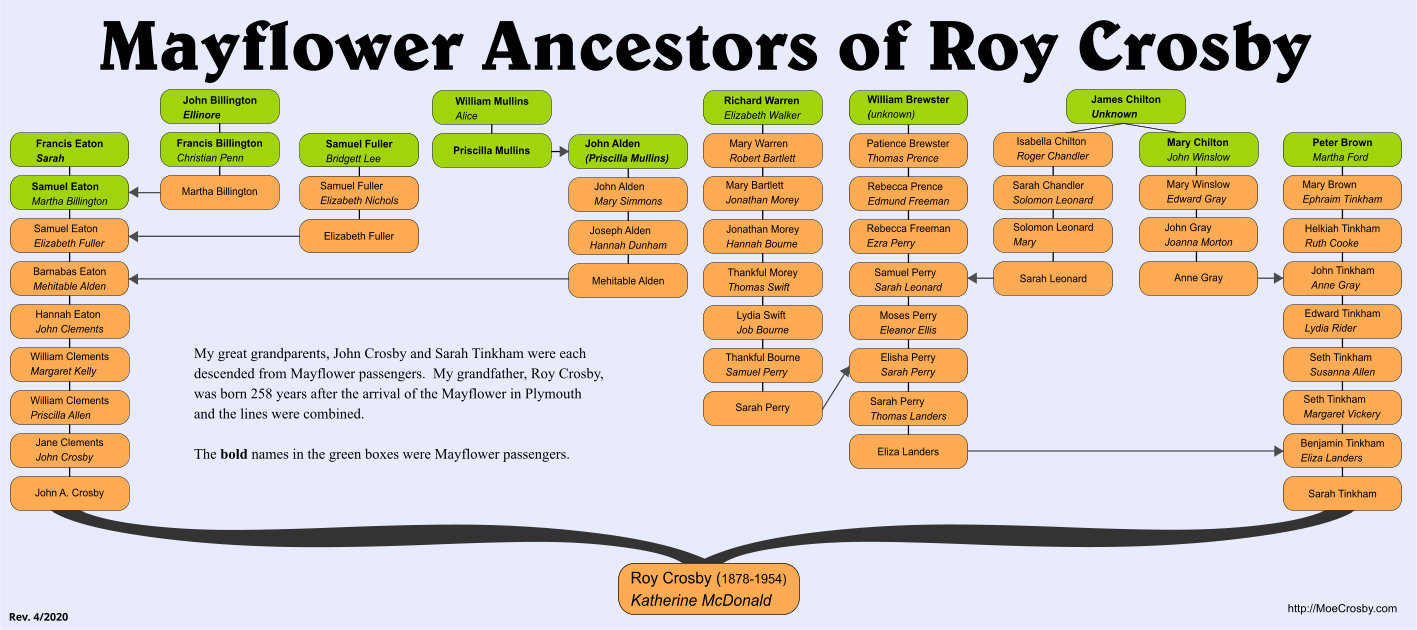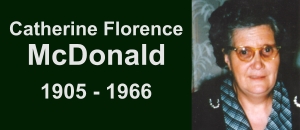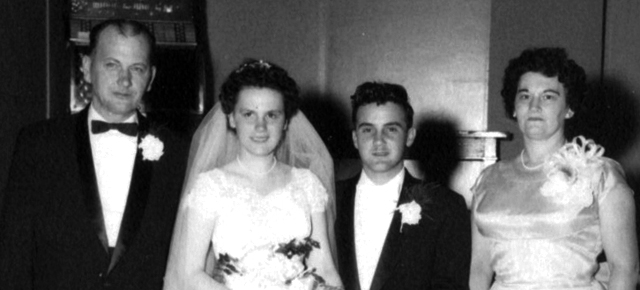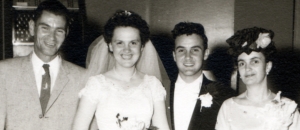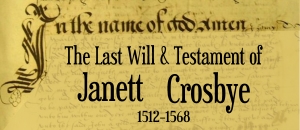Here lie the remains of
Mrs. MARGARET KELLEY
Wife of James Kelley, Esq.
Who departed this Life Janry 6 1804
Aged 60 Years 11 Months & 14 Days
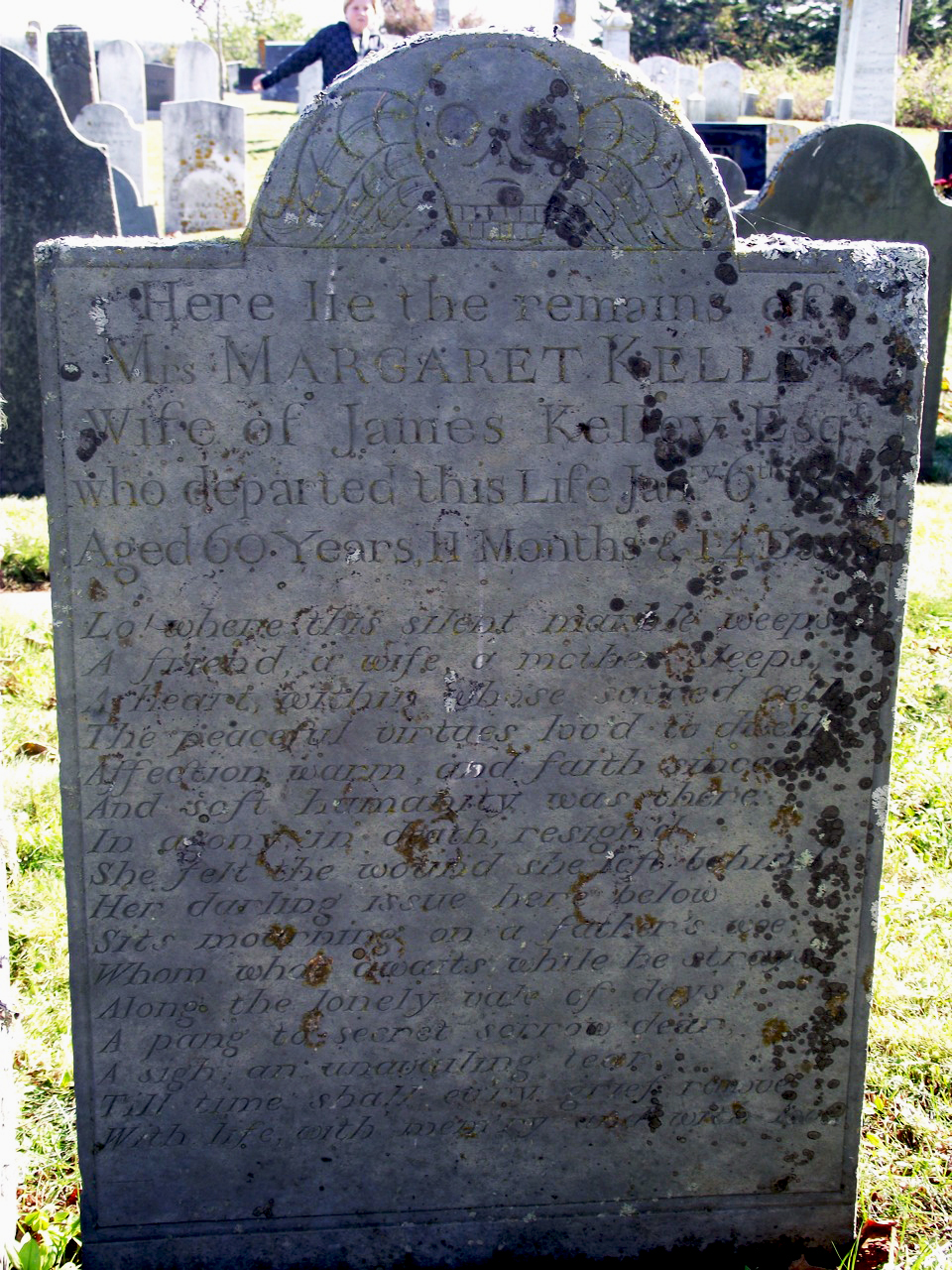
Lo! Where this silent marble weeps,
A friend, a wife, a mother sleeps.
A heart, within whose sacred cell
The peaceful virtues loved to dwell,
Affection warm, and faith sincere
And soft humanity was there.
In agony, in death resign’d,
She felt the wound she left behind.
Her darling issue, here below,
Sits mourning in its father’s woe
Whom there awaits, while yet he strays,
Along the lonely vale of days.
A pang to secret sorrow dear
A sigh; an unavailing tear,
Till time shall every grief remove,
With life, with memory, and with love.
~~~~~~~~~~~~~~~~~~~~~~~~~~~~~~~~~~~~~~~~~~~~~~~~~~~~~~~~~
Margaret Morgen Kelley was my 5th-great grandmother on the Crosby side. She was born February 9, 1743 in Manchester, Massachusetts to Samuel and Hannah (Carter) Morgen. On August 14, 1760 she married James Kelley in Manchester and their oldest son, James III, was born later that year.
In 1765 Margaret and James, with their sons James III and Samuel, moved to the southern tip of Nova Scotia and settled in a small cove. The place they made their home would eventually be called Kelley’s Cove (and still is). Between 1766 and 1788 Margaret gave birth to an additional 13 children — four more sons and nine daughters.
Margaret died June 6, 1804 and was buried in Chebogue Cemetery at Yarmouth, Nova Scotia. Her stone (above) has weathered nearly 208 years, along the Gulf of Maine coast, very well. Although lichens have grown on the face of the stone, the inscription is still easily read.
The author of the epitaph, titled “Epitaph on Mrs. Clarke”, was English poet Thomas Gray (1716-1771). However, the selection of this verse, though beautiful, is a bit odd. According to The Thomas Gray Archive, this epitaph was written in 1757 for a woman who died during child birth; Margaret, most likely, did not die during child birth.
Gray (1716-1771) was a contemporary poet for the Kelleys and in 1775 a book of his poems and other writings was published in England. A copy of the book obviously made its way to Kelley’s Cove. Viewing Margaret’s stone now I have to wonder — who chose the epitaph, and why? Was it a favorite of Margaret during her life? Perhaps James’ grief at her passing caused him to choose the verse. Or maybe it was a combination of the two.
James Kelley died June 12, 1807 and was buried alongside Margaret. His stone, which has not weathered the years as well as Margaret’s, also bares an epitaph:
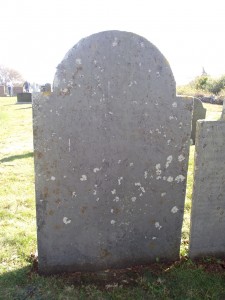
My flesh shall slumber in the Ground,
Till the last Trumpet’s joyful sound,
Then burst the Grave with sweet surprize
And in my Saviour’s Image rise.
Henceforth be ev’ry tender tear supprest,
Or let us weep for joy that he is blest
From grief to bliss from Earth to Heaven remov’d
His mem’ry honord as his life belov’d.
James’ inscription is a combination of two verses. The first four lines are from the hymn, “Lord, I am Thine”, written 1719, by Isaac Watts. The last four lines appear to be a popular epitaph, but I have not been able to find an author for the words.
Sources:
Vital Records of Manchester Massachusetts; Vol. I:68 & Vol. II:181
See Capt. James Kelley: Pioneer, Patriot & Progenitor of Sea Captains to learn more about James Kelley to find additional sources used here.
Credits:
The photos of James’ and Margaret’s headstones were found at the Arcadia Consolidated School, Yarmouth, NS web site. Also on the site are rubbings of the Kelley headstones and other photos, rubbings and transcriptions of headstones for other early settlers of Yarmouth, NS.
